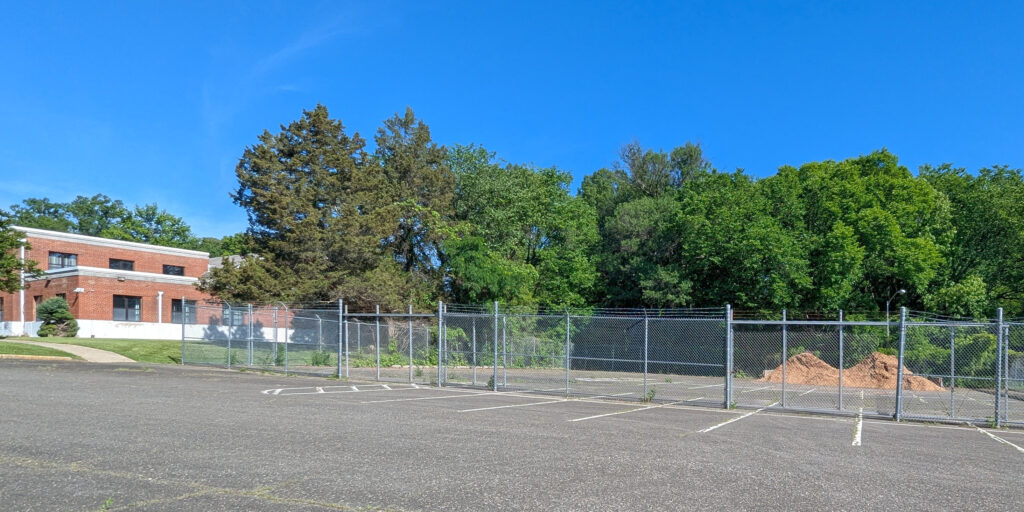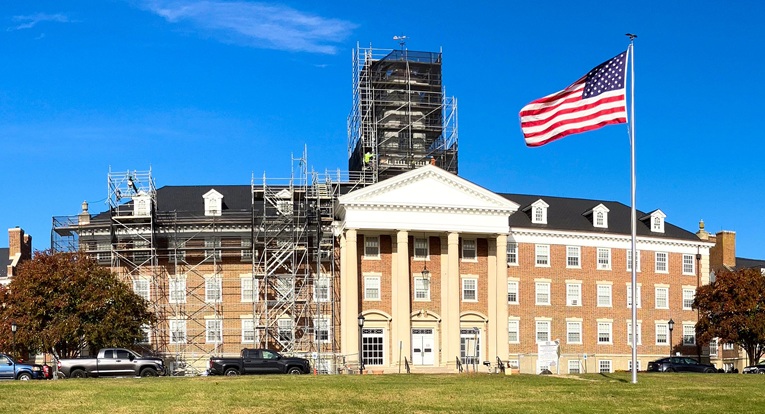The city’s curbside composting program currently uses an outpost at Trinity Church on Good Luck Road to process and cure food scraps from 410 homes but will be expanding by utilizing space at the armory site to cure the compost. At its April 28 meeting, the Greenbelt City Council approved this temporary use of space at the armory, a property the city acquired in September 2024. The site is currently unused as the city considers future possibilities and weighs costly renovations.
Mayor Emmett Jordan introduced the proposal and explained that the use of the additional space will allow the composting program, which is currently limited by space, to serve 660 homes and lower the per-home cost. City Manager Josué Salmerón said they were looking to use extended facility space where the compost can sit and cure, anticipating staff from the company Compost Crew rather than city staff would be on site twice a week to sift and turn over the compost. While allowing the program to grow, the proposed use of armory space would not cost the city any money, explained Salmerón. Compost Crew would like access to water and electricity, however, said Salmerón, which could be installed or brought in, after considering the cost-benefit analysis.
Activity at Site
Salmerón supported the temporary use of the facility for the composting program, noting it would have a benefit of bringing activity onto the site and deterring “aspiring artists” from putting their “artwork” on the building, while also making use of the property. He addressed a prior concern about compost being a potential eyesore by suggesting folks drive by the armory site now to see the mulch piles currently curing there. (The city has “a mulch pile problem,” in that it generates more mulch than it uses and welcomes people to take mulch, said Salmerón.)
Councilmember Kristen Weaver said the compost crew would bring activity to the site twice a week and conduct sifting twice a year. Weaver said the city is still in the brainstorming process for the future use of the armory and it is understood by the compost program organizers that the use of the site is not intended to be permanent. “Once we decide what to do with the armory this can shift somewhere else,” said Weaver.
Another Drop Site?
Jordan advocated for a way for those in apartments and condominiums to bring their food scraps and participate. While they couldn’t bring scraps to the armory site, which will be locked up, they could bring it to Buddy Attick Park, responded Weaver. She noted that those in multifamily homes are able to participate in the pilot curbside program but the program hasn’t received much interest from them – there is just one participant from Franklin Park apartments. In addition, this move to use armory space would increase the number of people who could participate, since the program is currently at capacity, said Weaver. Jordan noted rules of condominiums and apartment complexes may prevent residents from placing items for curbside pickup and he advocated for an additional site to drop off scraps in Greenbelt East, rather than the single site at Buddy Attick, which he says is inconvenient. Salmerón said they would discuss options but a concern would be how to create another drop-off point that’s secure and used appropriately. Salmerón gave the example of the Hanover Parkway recycling center, where household and construction trash had been placed in the recycling bins. Jordan said he believes food scraps are different and noted there’s an inactive composting site at Springhill Lake Recreation Center. It’s hard for people to come from Schrom Hills Park and Greenbelt East to Public Works to deliver their scraps, said Jordan.
Compost Pickup
Councilmember Rodney Roberts said if food scraps collection was part of the regular waste collection a lot more people would participate. Also, people would like to be able to get the end product – compost – for their yards, he said. (Under the current USDA grant compost has been returned to Greenbelt’s community gardens but under regular operations with Compost Crew, participants would have to purchase compost at a reduced rate).
“This should be a part of our waste collection service,” said Roberts, “because this year we’re going to ask people for more money for that service. So, if we’re going to ask for more money we should be providing more benefit for that money.” (For more on the potential coming changes to waste collection and the increasing cost to residents see the April 15 issue).
The motion to allow the compost program to use space at the armory was approved unanimously.




